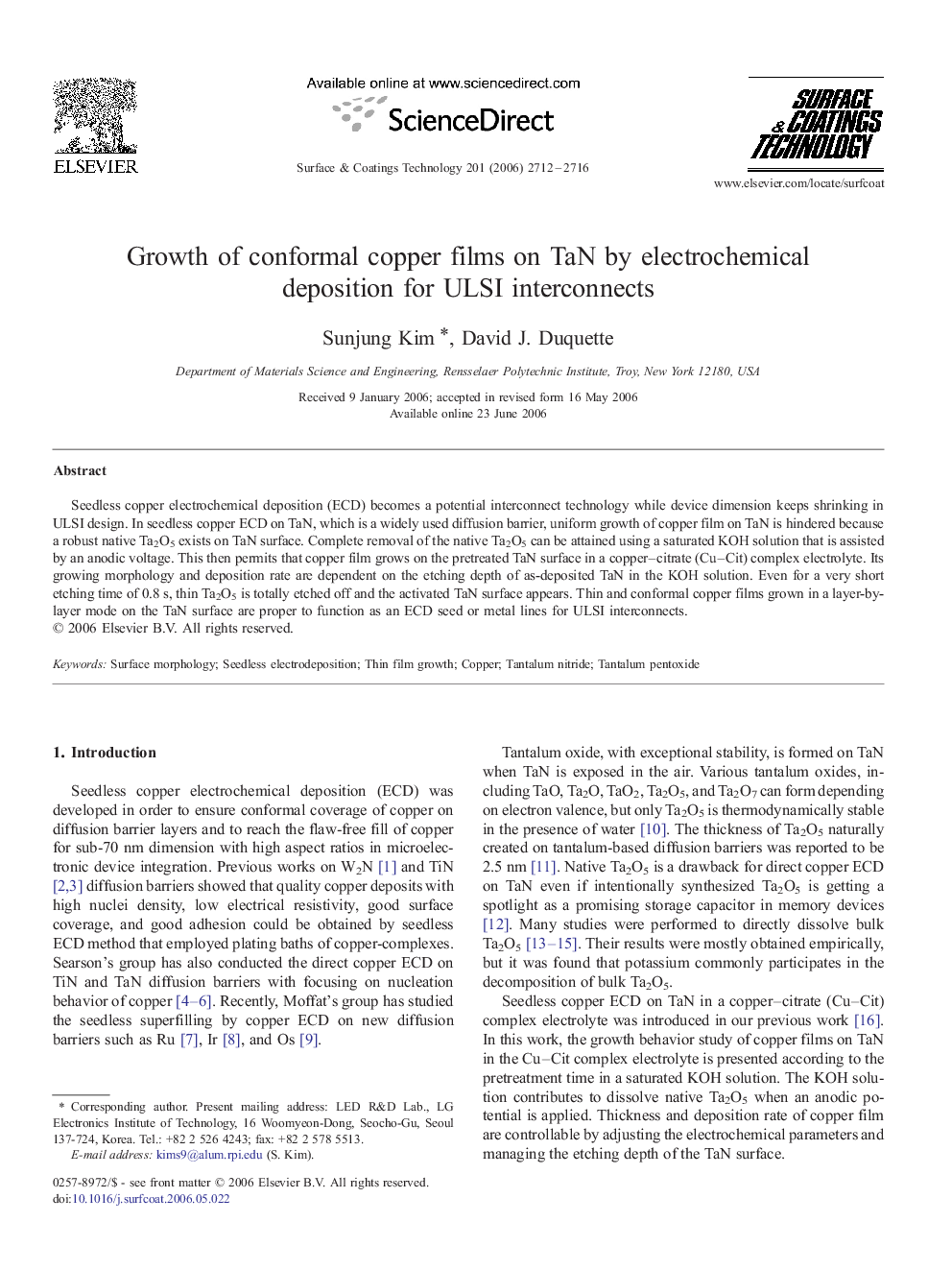| Article ID | Journal | Published Year | Pages | File Type |
|---|---|---|---|---|
| 1663383 | Surface and Coatings Technology | 2006 | 5 Pages |
Abstract
Seedless copper electrochemical deposition (ECD) becomes a potential interconnect technology while device dimension keeps shrinking in ULSI design. In seedless copper ECD on TaN, which is a widely used diffusion barrier, uniform growth of copper film on TaN is hindered because a robust native Ta2O5 exists on TaN surface. Complete removal of the native Ta2O5 can be attained using a saturated KOH solution that is assisted by an anodic voltage. This then permits that copper film grows on the pretreated TaN surface in a copper-citrate (Cu-Cit) complex electrolyte. Its growing morphology and deposition rate are dependent on the etching depth of as-deposited TaN in the KOH solution. Even for a very short etching time of 0.8Â s, thin Ta2O5 is totally etched off and the activated TaN surface appears. Thin and conformal copper films grown in a layer-by-layer mode on the TaN surface are proper to function as an ECD seed or metal lines for ULSI interconnects.
Related Topics
Physical Sciences and Engineering
Materials Science
Nanotechnology
Authors
Sunjung Kim, David J. Duquette,
